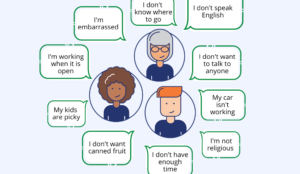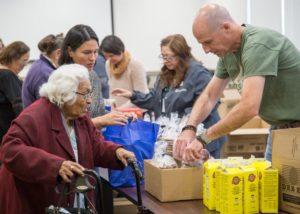Mobilize’s CTO, Jerry Ramey, has firsthand experience with the nutritional struggles of poverty stricken rural communities.
“I grew up in a mobile home, what we call a trailer, in Mouthcard, KY. This is undoubtedly a town you’ve never heard of and you couldn’t find on a map if you tried (right near the border of Kentucky and Virginia). My parents were both working class people without a formal college education. I remember my mom going to the local food bank to get what was available which usually was sugary cereals and sodas. It doesn’t take a nutritionist to see that the food that was made available to us through the local food bank were not the healthiest options.
Because I grew up in what is colloquially known as a food desert, we lacked access to affordable fruits, vegetables, whole grains, and other foods that make up the full range of a healthy diet. As one might assume, these areas overlap heavily with low-income communities both urban and rural. There are many root causes for the continued existence of food deserts from systemic disenfranchisement to the increased cost of healthy food options that need desperate attention from both public policy makers and the private sector alike.”
But what material effects do food deserts have on people’s everyday lives? Well, that is best summarized by this analysis from PBS NewsHour: “Nationally, according to U.S. Department of Agriculture data, counties with the highest percentage of households living in food deserts (10 percent or more) had rates of adult obesity in 2008 that were a full nine percentage points higher than counties with the lowest percentage of households in food deserts (1 percent or fewer households).
Surely, these differences reflect the particular characteristics of counties in which more people live in food deserts. For example, diabetes is related to poverty and unemployment, not simply to proximity to a supermarket. However, the relationship between food deserts and these health outcomes remains, even after we control for counties’ median household income, poverty rates, and the racial and ethnic make-up of the population. Food deserts also contribute significantly to obesity among low-income preschool children. All of which is to say, living in a food desert is not incidental, it has an independent effect on obesity and diabetes. Food deserts matter for public health.
When presented with the opportunity to partner with a Colorado food bank to make their services more accessible and safer during the height of the Covid-19 pandemic, Mobilize leaders Jerry Ramey and Jade Baranski were quick to jump onboard and learned the drastic changes food banks put in place to keep their teams and the people they serve safe. Since that first day, the Mobilize Enterprise platform has grown in close conjunction with the food banks that use it and is designed to give leaders real-time data and insight into who they serve. Access and information are the first step in transforming the food distribution landscape into a more equitable space. In conjunction with the Michigan Food Bank Council, we constructed Enterprise to be the ideal tool for complex food bank systems. The unique aspect of the Michigan Food Bank Council is that they manage food banks throughout the state, for both rural and urban communities. It was important for them to serve each community’s needs to the best of their ability.
For more information on Mobilize Enterprise and how it can be used to uplift your organization and the people it serves, please reach out to Romeo Augustine for more information.





